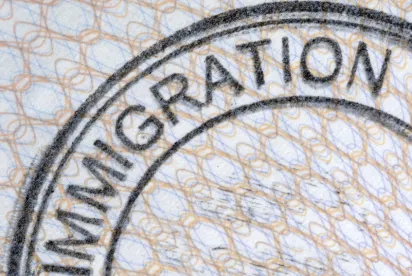The Key – Applying the “Preponderance of the Evidence” standard”?
Immigration practitioners are trying to figure out what to make of the proposed Policy Memorandum on L-1B Adjudications Policy (hereinafter “Guidance”) published by USCIS on March 24th. There will be much discussion and debate during the 45-day comment period as we all struggle to figure out whether this will in fact have a positive impact.
There are a lot of good things in there. It clearly states that the Immigration Act of 1990 was intended to broaden the use of the L-1 visa category, contrary to the position the Administrative Appeals Office has taken. It reasserts the principle that USCIS should give deference to its prior decisions. It reaffirms that proprietary knowledge is not required and that an employee does not always have to possess knowledge that is unique to the sponsoring employer or that the knowledge necessarily be narrowly held within the petitioning employer’s organization. It allows the Service to consider higher salary as an indicator of specialized knowledge.
However, many will argue that it has not gone far enough. Perhaps USCIS did not affirm specifically enough that it’s Guidance should be binding on sister departments and agencies such as Customs and Border Protection and the State Department, and in turn did not acknowledge that prior decisions of those sister departments and agencies should be given due deference by USCIS. Thus, while the letter of a pottery manufacturer claiming that pottery makers from Mexico needed training in the United States might not be credible, given that anyone could observe the vast quantity and variety of designed ceramic giftware that is manufactured in Mexico [see Matter of Treasury Craft] made the context of that situation not credible.
The Tone of the Guidance and the “Preponderance of the Evidence” Standard
Perhaps what is most significant about the guidance is that it pulls together all of the “learning” of the Department of Homeland Security on the subject and addresses the intracompany transferee program in a positive way. The Guidance states “creation of the program reflected Congress’ concern with meeting the workforce needs of multinational employers operating in an increasingly global marketplace”. USCIS’ mission is to ensure that the objectives of the L-1B program are achieved and that the program’s integrity is maintained.
The key unanswered question is will USCIS adjudicators take this to heart and critical to that is for them to integrate into their thinking the significance of the applicable standard of proof, “preponderance of the evidence”. As the Guidance points out that it is a lower standard of evidence than “beyond a reasonable doubt” or even “clear and convincing evidence”. Even if an officer has some doubts about a claim, if the petitioner has submitted “relevant, probative, and credible evidence, that leads to the conclusion that the claim is “more likely than not” or “probably” true, the petition should be approved.
What does “More Likely Than Not” or “Probably True” Really Mean?
So how can it be as reported in March by the National Foundation for American Policy (NFAP) that 35% of L-1B petitions filed in 2014 and 56% of petitions filed on behalf of Indian nationals were denied. Is it really the case that all of these petitioners and the lawyers that represent them are so misguided, incompetent, or worse presenting so many bad petitions? I think not. The same NFAP report indicated that only 6% of L-1B petitions were denied in 2006. I do not think that over a 9-year period USCIS became dramatically better at ferreting out fraud and inadequate applications, while at the same time petitioners and the immigration bar became markedly worse.
What changed over those years was the collective attitude of adjudicators toward petitioners and their petitions. Lip service may have been paid to the “preponderance of the evidence” standard, but in reality, it wasn’t being applied and hasn’t for a number of years.
Nothing illustrates this more dramatically than a startling statistic. The NFAP reports that USCIS denied L-1B petitions at a higher rate for employees already working in the U.S. and extending their status than new petitioners. Forty one percent of such petitions were denied as compared to 32% percent for initial applications. Clearly, officers in 2014 looked back at granted cases from earlier years and did not like what they saw!
Inherent in the “preponderance of the evidence “standard” is an attitude towards petitions which is benevolent. A standard, which as the published guidance puts it, allows for approval even if “an officer has some doubt about a claim”, can only work if an officer‘s attitude towards petitioners and petitions is positive or, at the very least, neutral. Only in that context could an officer or any individual give the benefit of the doubt. There has to be a lack of cynicism and suspicion to give any other person the benefit of the doubt and that is precisely what the “preponderance of the evidence” standard says – give the benefit of the doubt. Do not make each and every petitioner exhaustively document each and every point as you make the prosecution do in a murder trial.
That is not to say that officers have to be naïve and oblivious to indicators of fraud or pass over significant inadequacies. It is critical that petitioners submit relevant, probative and critical evidence. But, as the Guidance points out, the way you determine whether evidence is in fact relevant, probative and credible, is by “individualized assessment based on a totality of the circumstances”. Thus, while the letter of a pottery manufacturer claiming that training for pottery makers was unavailable in Mexico, given that anyone could observe the vast quantity and variety of designed ceramic giftware that is manufactured in Mexico may in the context of that situation not be credible [see Matter of Treasury Craft], the letter of a senior human resources officer of a global company with specific information as to the skills set of an employee to be transferred, drawn from the company’s internal personnel records, coupled with an explanation of what he will be doing in the United States, should be extremely credible, given the totality of the circumstances. This is not a bias in favor of one type of company over the other, but recognition as to the level of accountability each of these petitioners has in making the statements that they make, and in what context.
Will USCIS Adjudicators get with the Program?
There will be a lot of discussion as to the minutia and details within this Guidance over the next 45 days, but perhaps that is not what is really critical. What is critical is whether adjudicating officers will come to recognize that, at least for the most part, L-1B petitioners are not enemies of America, but companies that have the ability to contribute significantly to the global economy and to the United States and as Congress has recognized, should be permitted to make reasonable decisions in transferring personnel.
The question we are all waiting to be answered is: Will the “preponderance of the evidence” standard be taken seriously?



 />i
/>i

